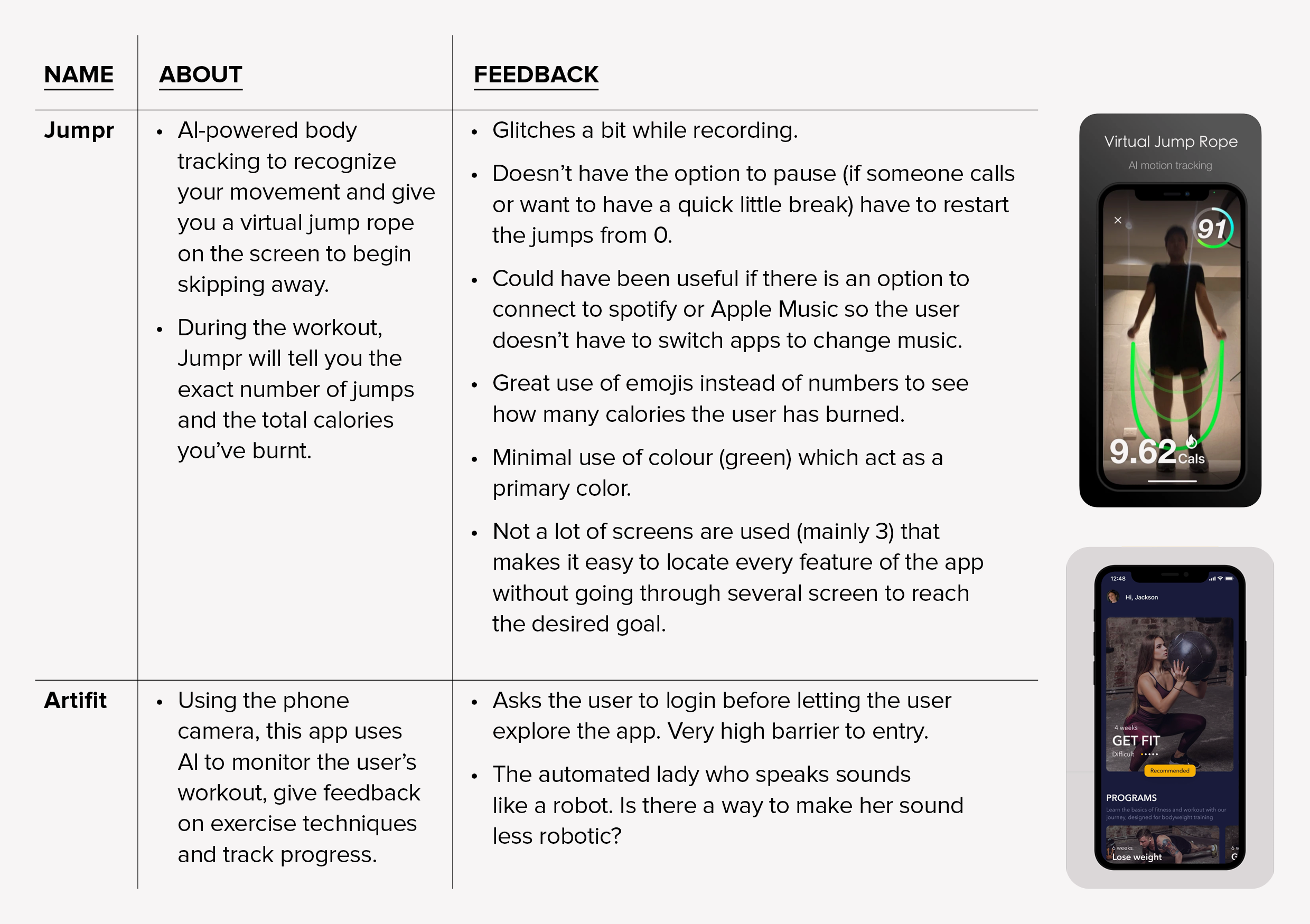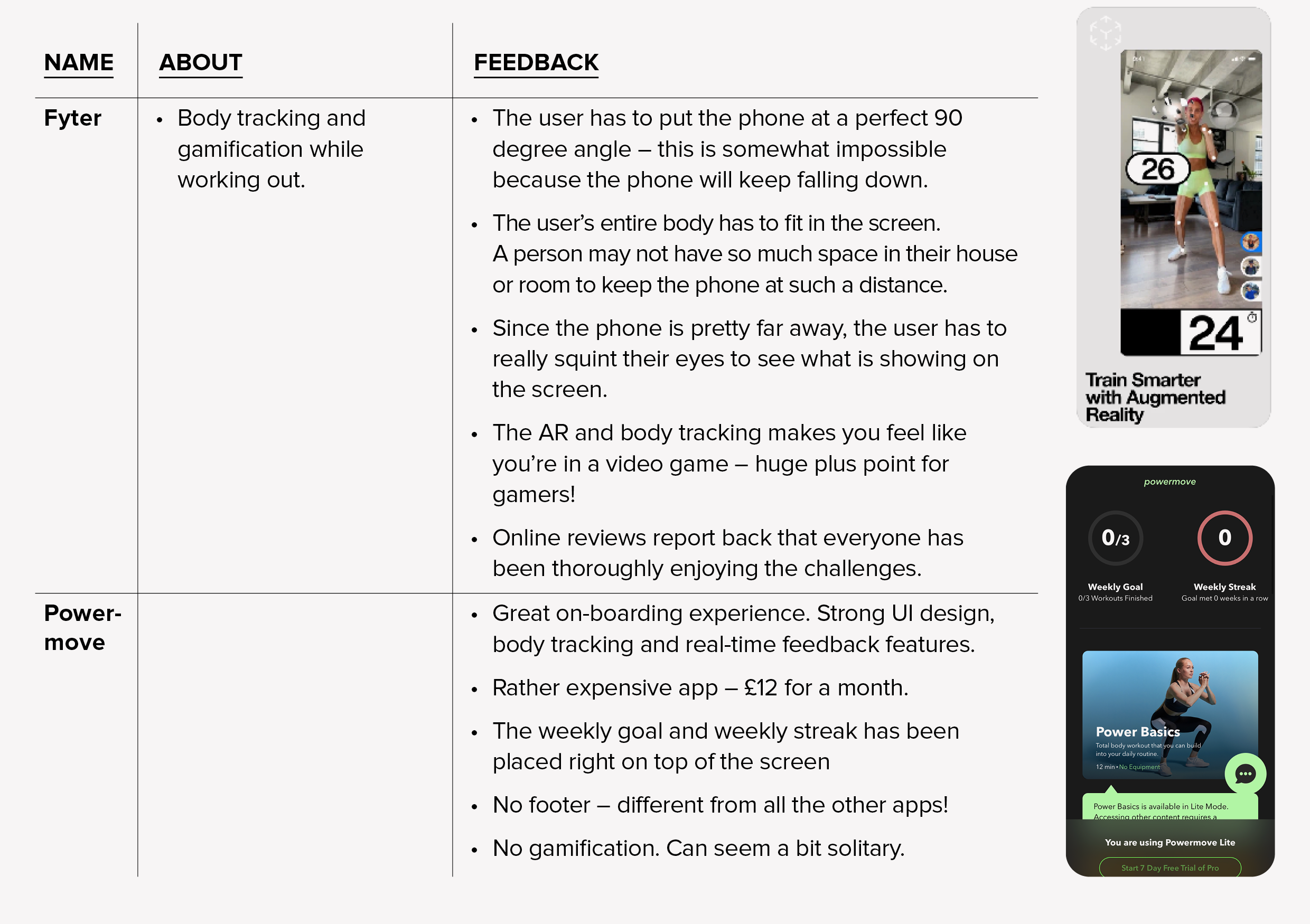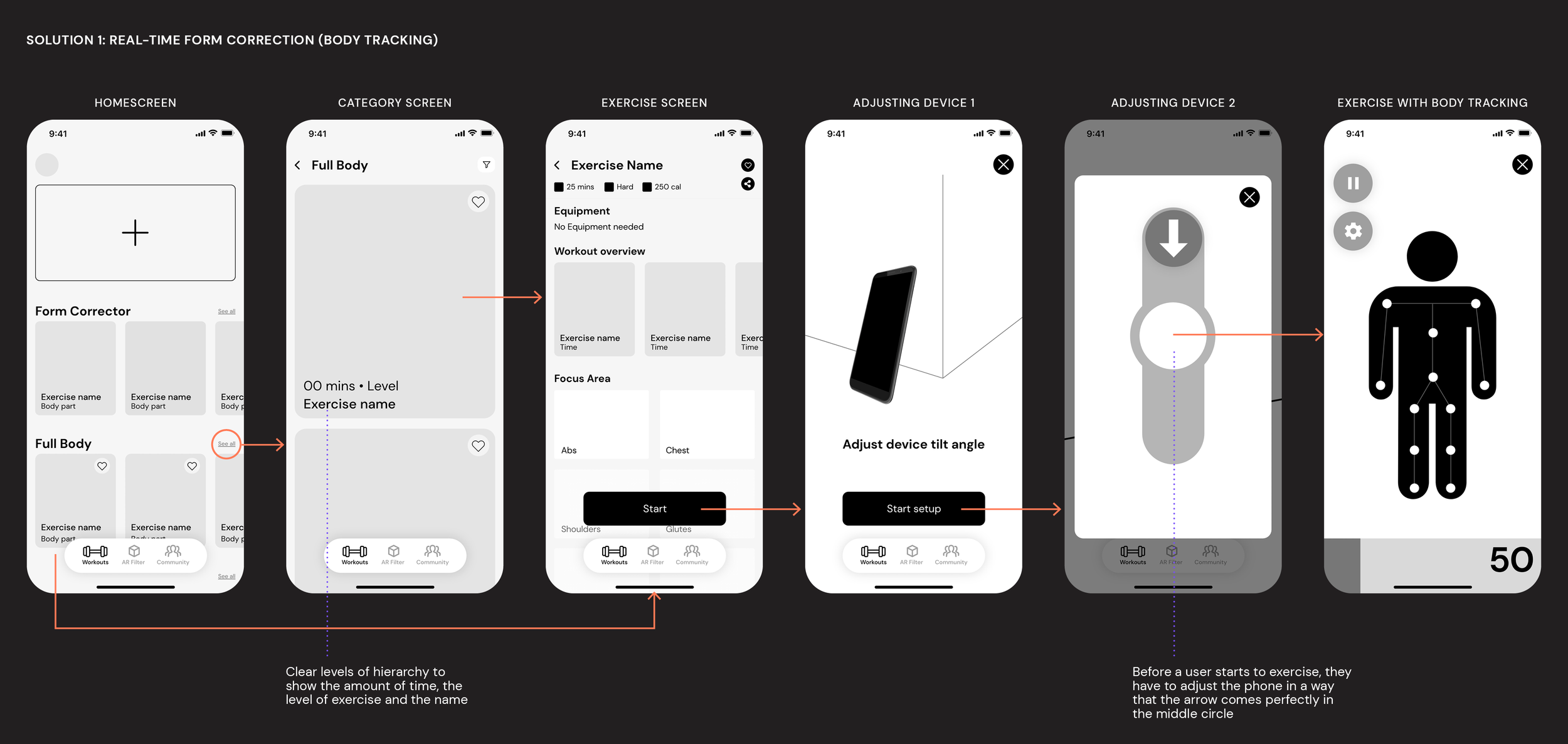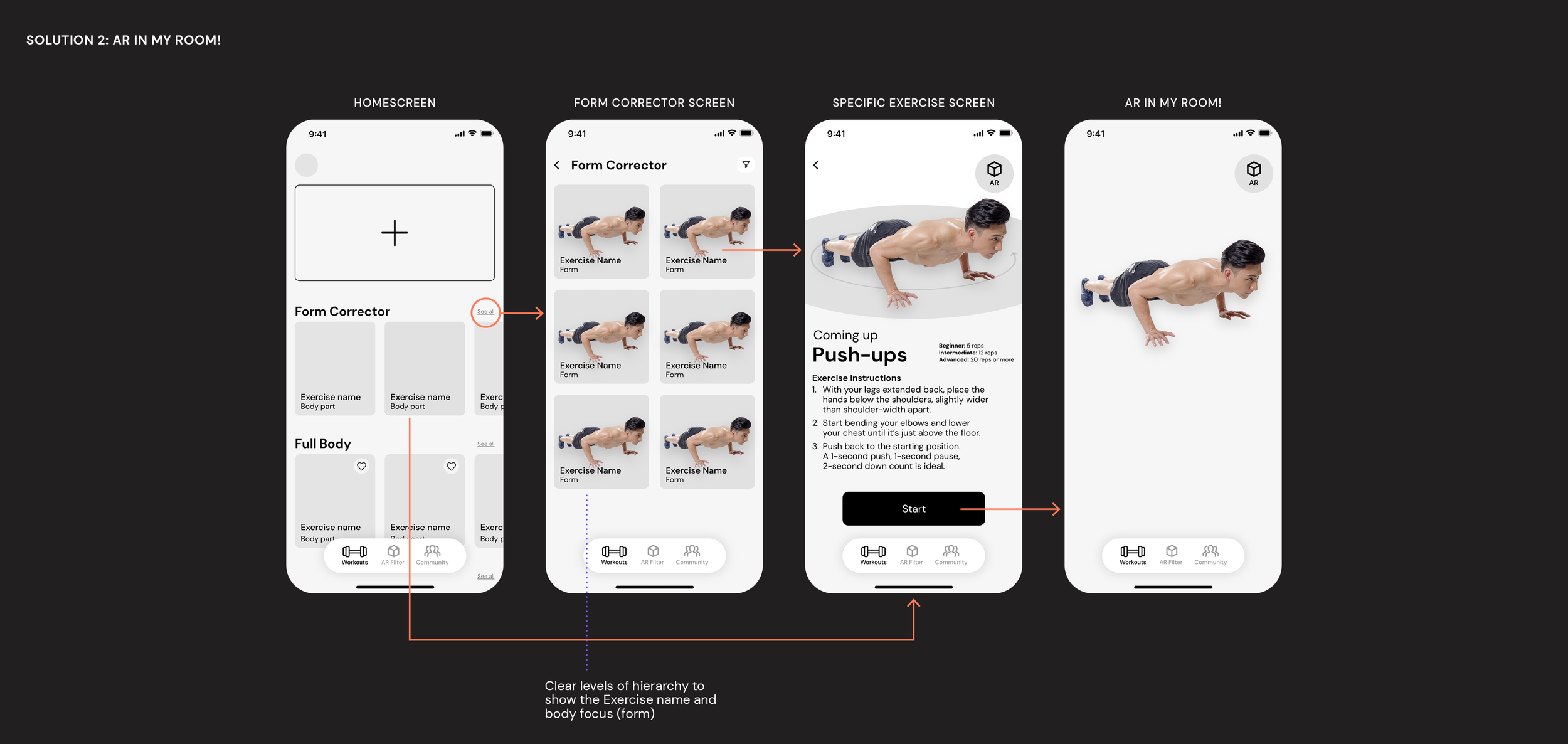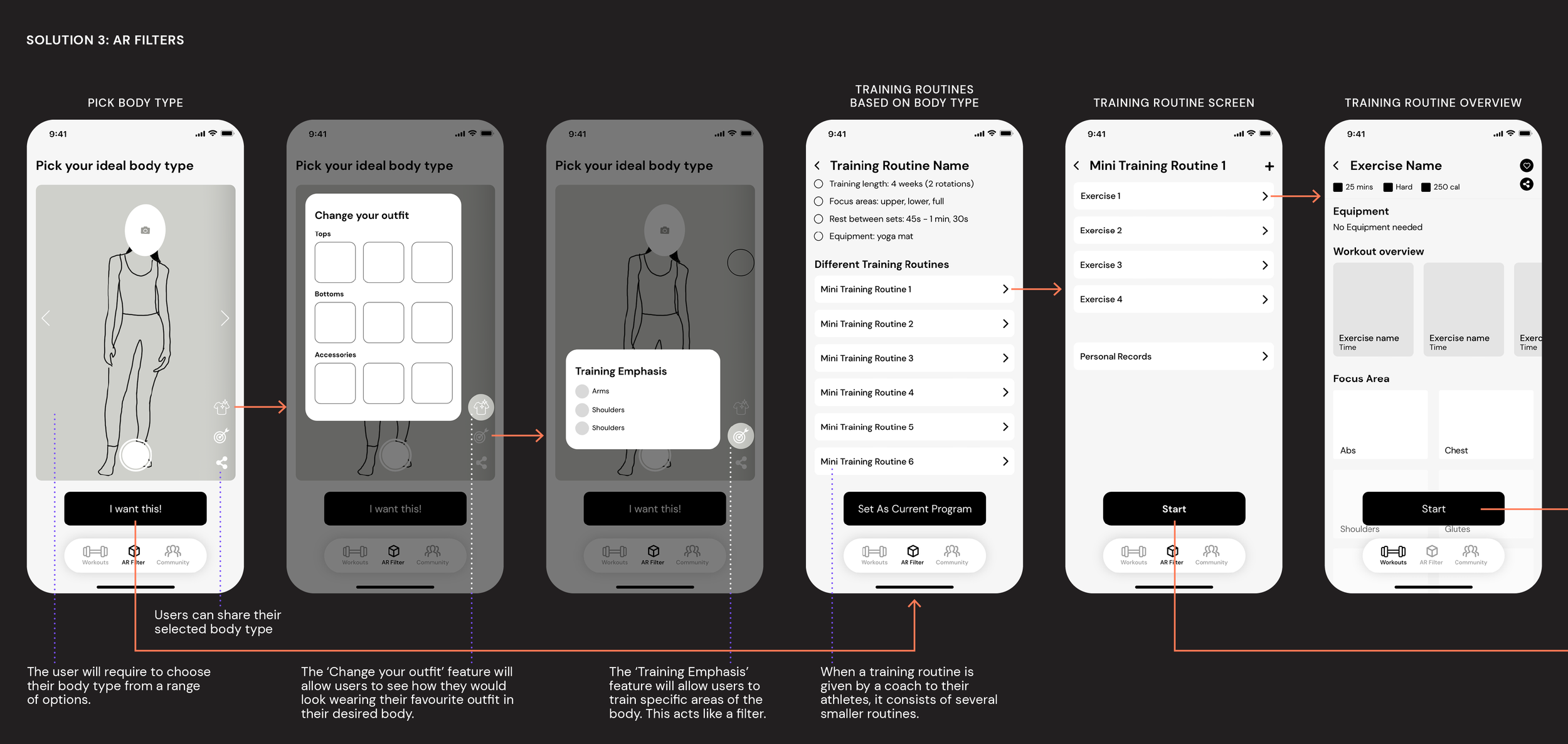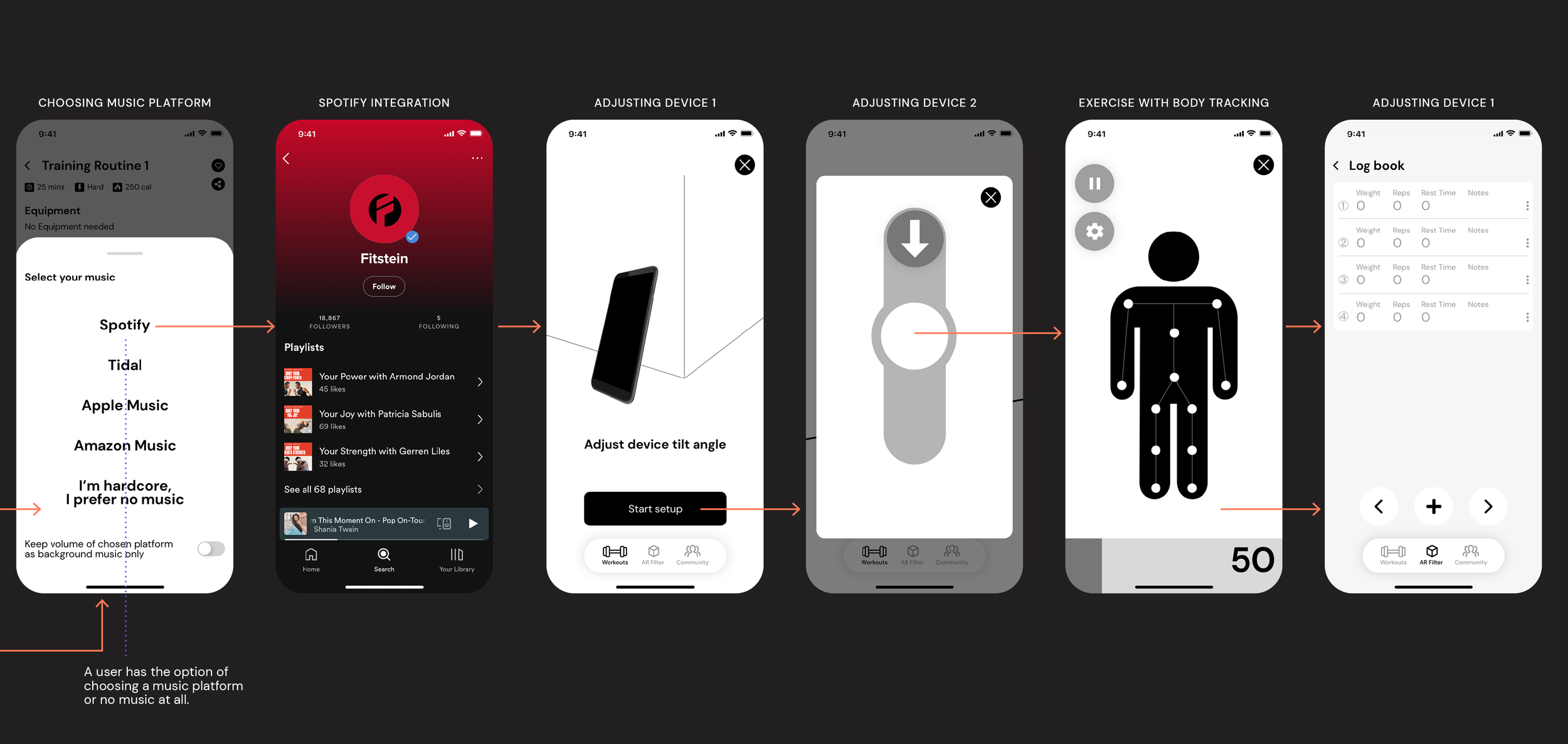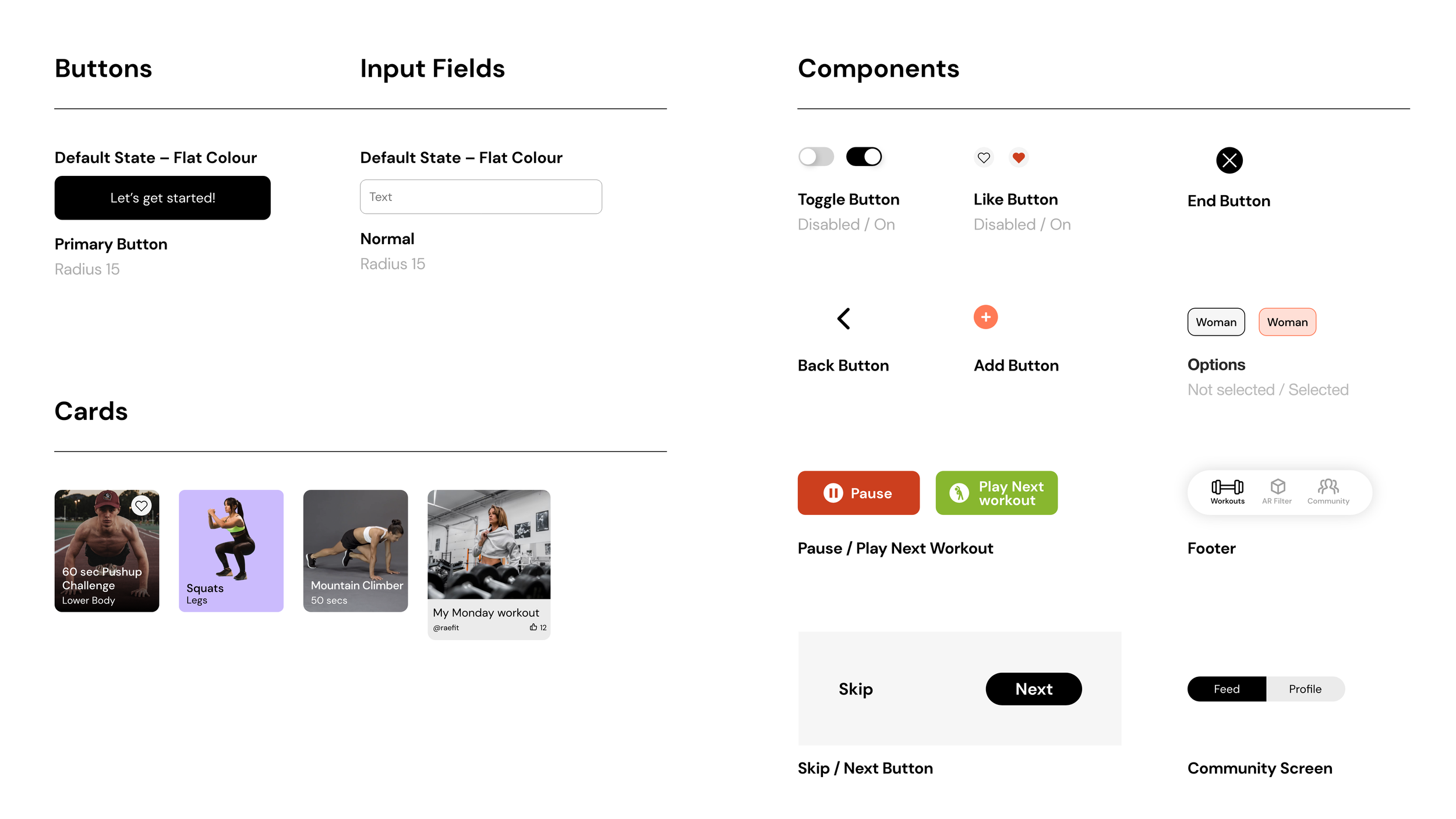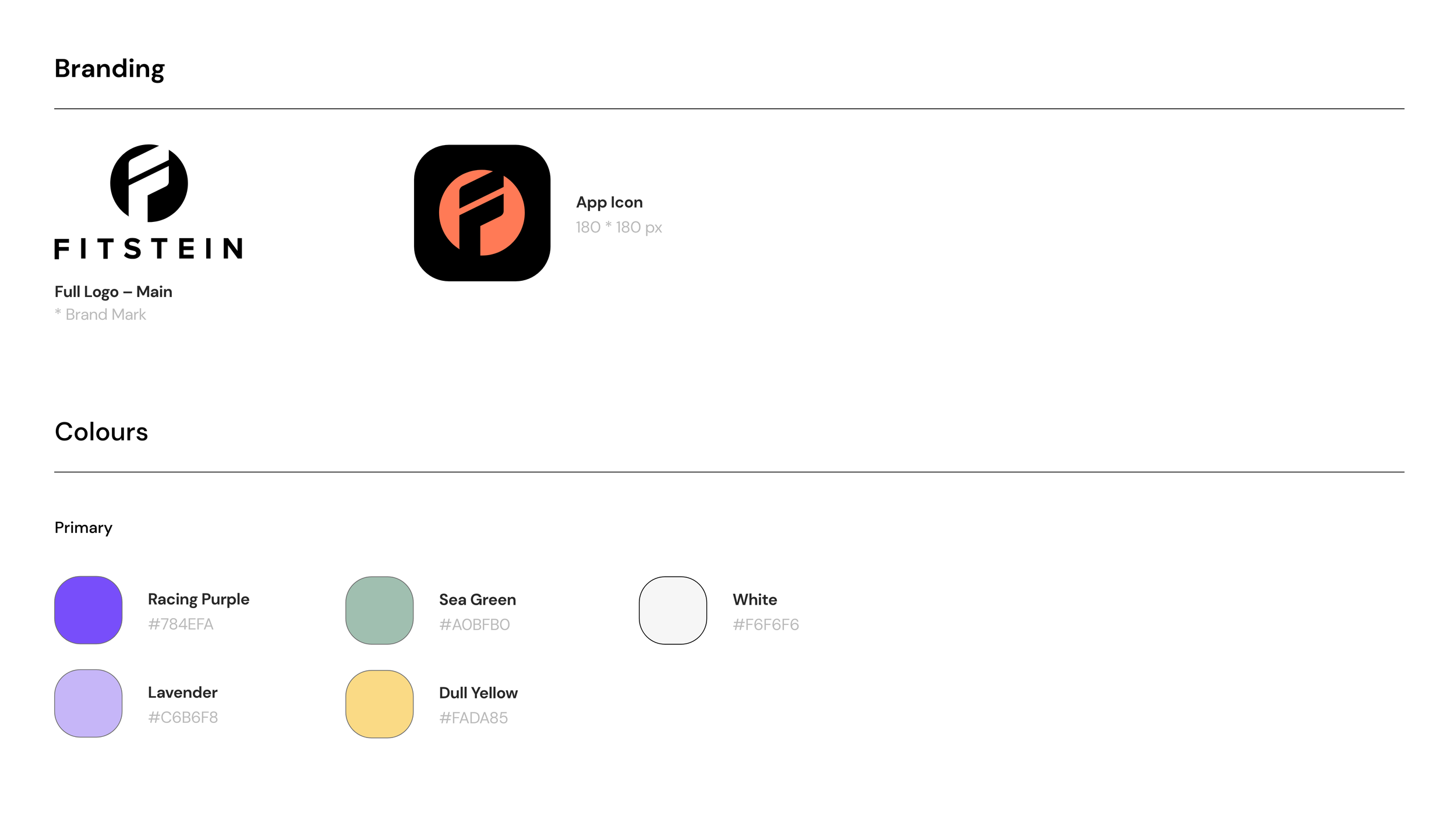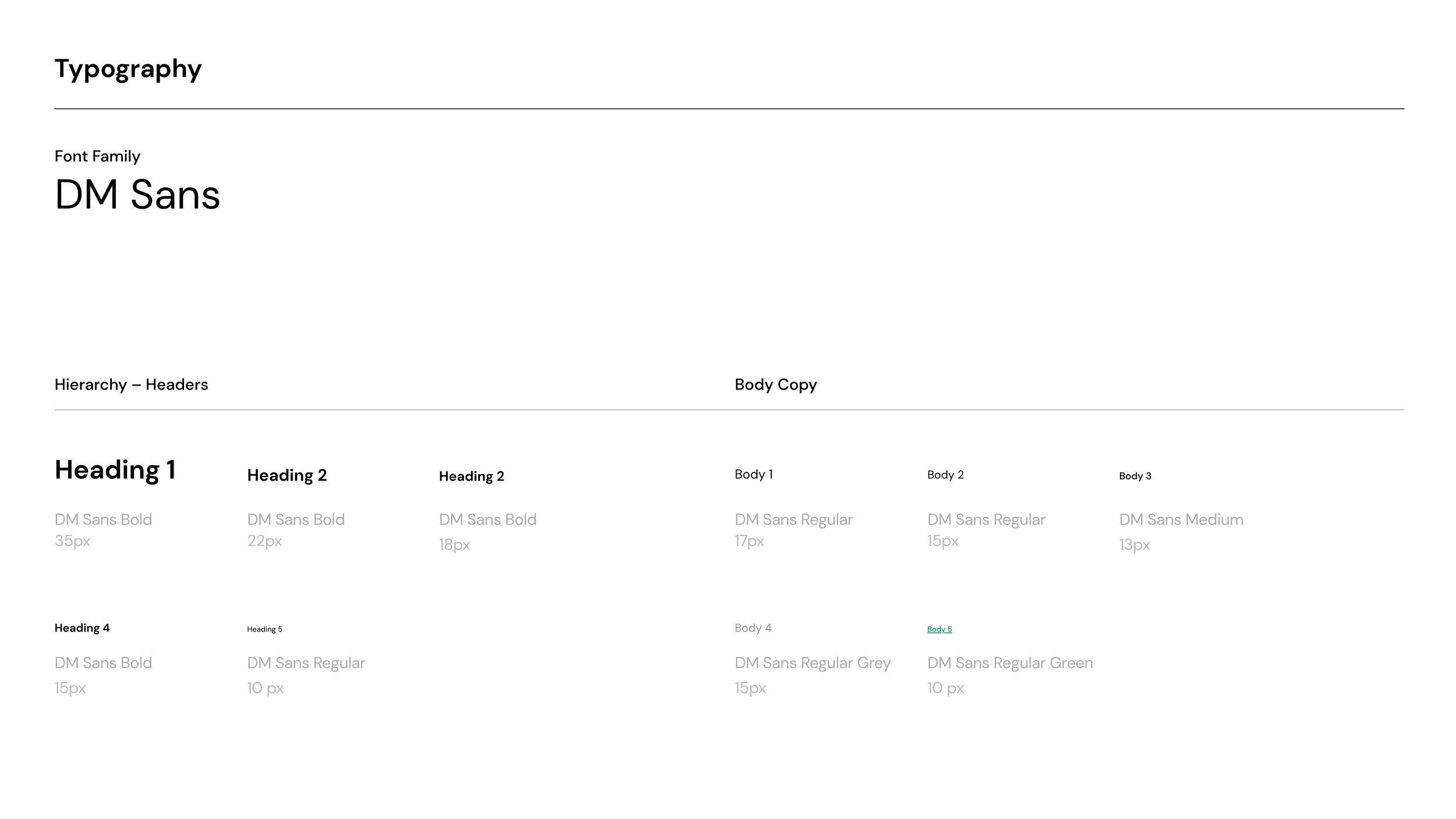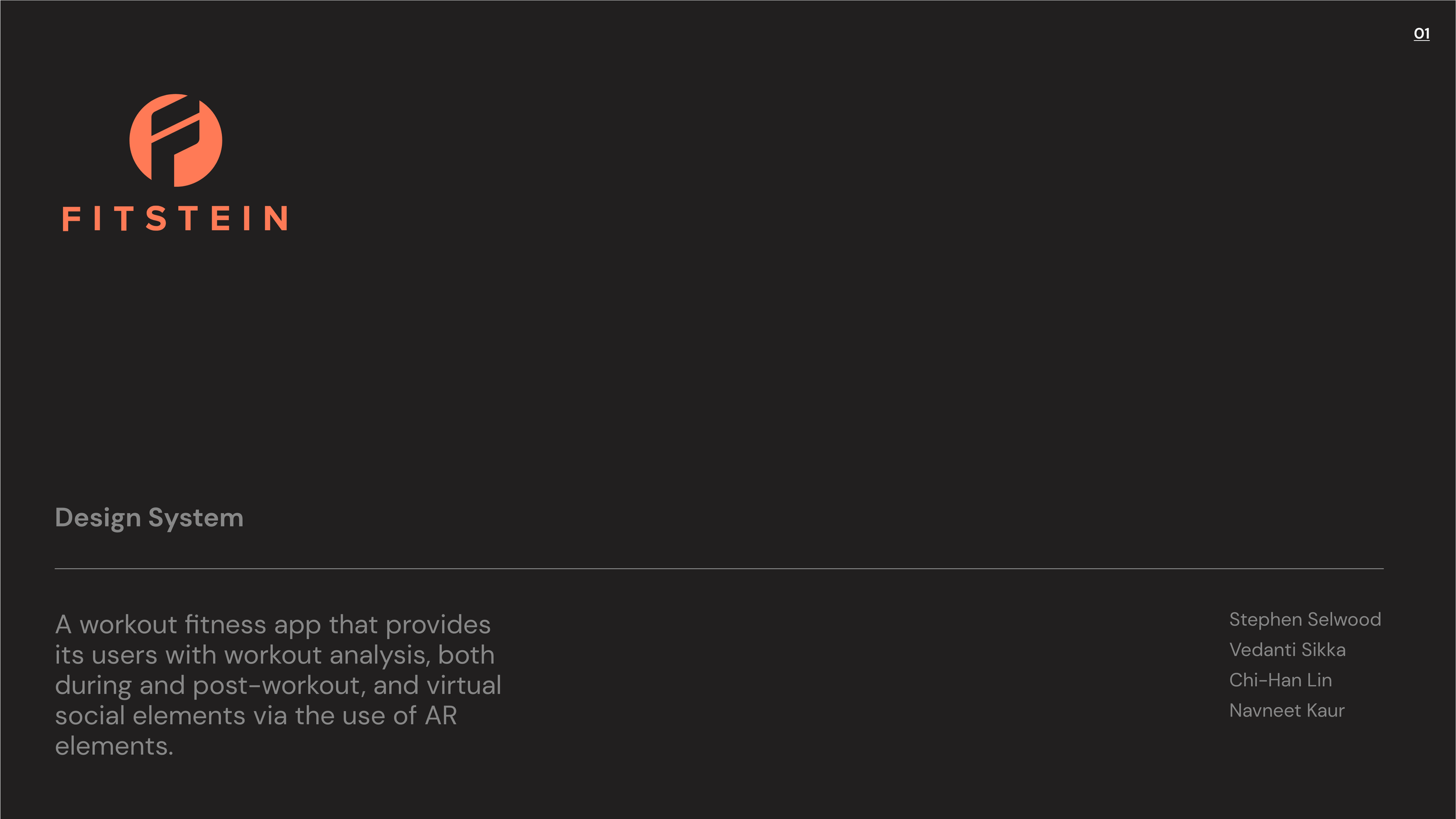Fitstein: raise your fitness levels with the help of Augmented Reality
OVERVIEW
As part of the Interactive Media Practice program at the University of Westminster, we were tasked to tackle a current societal issue through the use of creative technologies. During the ideation state, we all realized that our fitness levels had been severely affected during the pandemic.
THE PROBLEM
While gyms and health centres had become more expensive after the several lockdowns ended, the number of classes offered had sharply reduced because of cost-cutting. All of us have put on ‘pandemic weight’, and were eager to shed some kilos. Turning to various fitness apps, each of us found different problems, from not being motivated enough, to not knowing whether our exercises were done correctly enough – both problems that were initially being solved by instructors.
THE CHALLENGE
How can fitness apps provide the feeling of an in-person instructor who corrects your form through the use of technology?
Time: 5 weeks
Role: UX/UI Design, Strategy, Prototyping, Development
Tools: Adobe XD, Miro, Zoom, UserTesting, Unity, ARKit
Team members: Stephen Selwood, Navneet Kaur, Chi-Han Lin
THE SOLUTION
Fitstein is a workout fitness app that provides users with a workout analysis, both during and after the workout.
Users will be able to choose and ‘try on’ their ideal body types through AR. Based on the body type they choose, routines and exercises will be given accordingly, along with prompts that will guide them to do the exercise in the most efficient way.
The lack of access to a trainer is not a reason to not be fit anymore since the app’s ‘form corrector’ corrects users while exercising through body tracking and voice integration.
The app also encourages users to get involved in the community by posting and interacting with other fitness enthusiasts as well as taking part in the rewards features. Fitstein has been currently built for iOS only.
THE RESEARCH
The UK is a fitness hotspot. There are over 7,200 fitness clubs in the UK, with over 10 million combined members. Interactive Mirrors are the latest type of exercise equipment designed to make it easier to get a full-body workout at home. Many health clubs have started streaming professionally coached classes to customers through virtual reality glasses and headphones. Additionally, athletes are finding a new way to communicate and share with fans; Floyd Mayweather has developed his own Mayweather at home boxing.
Fitstein targets GenZ and Millennials living in major cities like London, New York or San Francisco. Their professions range from lawyers, journalists, engineers, designers, tech folks – people who more open to integrating technology in their workout routine.
The primary target audience are individuals who are in the 23 to 34 age group. They are college students or young professionals, and are just starting to realize the importance of having a balanced and healthy lifestyle, but may not have the tools to help them. The secondary target audience is the 35 to 45 age group. They have been working for more than a decade now. Many of them probably have had a health scare already, or have watched their parents go through one. A well-balanced lifestyle is of the utmost priority.
Based on the research, we came up with 3 key problems that needed to be solved.
Problem 1: Lack of access to in-person instructors leads to incorrect form and exercise postures, which can cause injuries.
Problem 2: It’s hard to follow an instructor virtually – you’re not able to see all sides of the body.
Problem 3: To remain motivated without a visual in mind requires a lot of self-determination. How does one know what our body may look and feel after?
COMPETITIVE RESEARCH
In addition to the user interviews, we compared the offerings and functionalities of 6 different exercise apps that imbed creative technologies, along with 7 other regular exercise apps.
FUNCTIONALITIES
We started off with 10 functionalities (!!), but quickly realised that to make a successful MVP, we need to start small. We cut it down to six that we thought we could accomplish. And once we started actually designing / coding the app, we came down to three. The biggest learning here was the amount of time it takes to build each feature.
EMPATHY MAP
Next, we mapped the response and thought of the users we interviewed to better understand their process and thinking. Our fitness expert (Chi-Han Lin), who had successfully opened a gym back in China before he came to the UK was able to guide us into digging deeper into our user’s personas and extract hidden thought processes and dissect responses. Just goes to show how important a diverse team is!
INFORMATION ARCHITECTURE
Our IA was based on the 3 goals we identified: real-time for correction, AR Filters to help users choose their ideal body type and building community
USER FLOWS
We built an extensive user flow based on Goal 1 and Goal 2. Several different iterations were made before we settled on the one below.
WIREFRAMES
Based on the user flows, I sketched out the low-fidelity wireframes, and had everyone give in their inputs on how to improve the user flow.
Mid-fidelity wireframes: For this stage, I got the whole group to work together to build out the rest of the wireframes. We worked through a mix of in-person and Zoom sessions.
As someone who prefers exercising outdoors and doesn’t use fitness apps as such, constantly building iterations and prototyping with our end users helped me define the screens a lot better than I would have imagined.
Interact with the Adobe XD file here.
FINAL TESTING
DESIGN SYSTEM
A basic style guide and pattern library was built as part of the Fitstein design system. The style guide focused on the usage of colours, fonts, icons and imagery while the pattern library focused on integrating the different components and their usage.
COSTING
Following the fremium business model, Fitstein will offer certain basic features to users at no cost, and will charge a premium for advanced features. Relevant paid advertisements such as offering accessories or filters for the profile avatars will be another source of revenue.
To lower the barrier of entry, users will be able to download the app, and experience on workout through AR, before needing to make an account and pay. AR in fitness is still new technology, and it is important to show its value to new users. We positioned the cost of the app at £4 for all features, , £2 for the Standard Edition and £0 for the Free Edition, which allows users to test out two exercises for free.
As creatives, we tend to be most critical of our own work. So naturally, when it came to the SWOT analysis part, we tore our app idea to shreds. Not great for our ego, but excellent for the project in the long run.
From in-app to off-app marketing strategies, we looked at this project beyond just a UX/UI project. It would be ideal to have a website for legitimacy, even if it’s just a landing page, social media presence and email campaigns, before moving on to more creative strategies such as partnerships and personalised push notifications.
Here are some BTS shots of us testing the app. You can watch the whole below.
User Feedback:
Onboarding required further UCD approach. Should have explained to the user why we want to collect gender, body type data, etc., and how it will benefit them in order to get a more personalised workout plan / overall experience.
Excellent brand identity. Information Architecture is clear.
The text on the last screen of onboarding "Let's get started" button creates a sense of excitement and urgency.
Team reflection
First list down all the problems one can think of, then select only 1 or 2 key problems to solve.
It would have been more interesting if we had done the UI in dark mode.
OTHER PROJECTS








